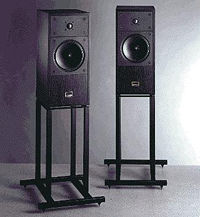Wharfedale’s XP collection debuted in autumn 1975 and quickly gained a following since each model had a nice tone, was well-made, and was designed in an appealing manner. It was a great hit, quickly becoming the go-to brand for entry-level, cheap loudspeakers, appealing to those who couldn’t afford Mordaunt Short, Monitor Audio, Celestion, or KEF.
The Chevin XP’s pricing was very clever; it cost £37, which put it just above the many low-quality speakers on the market at the time; it was smaller and had fewer drive units, but it definitely sounded better than its price competitors. Those interested in the Chevin XP couldn’t help but be attracted by what Wharfedale had to offer higher up the line, and this was the genius of Wharfedale’s sales pitch to late-’70s budget speaker purchasers.
You could say that the design and performance of these items were bang on, similar to what Ford was doing with its Fiesta, Escort, and Cortina automobiles at the time. Wharfedale had the SP2 series – Teesdale SP2 and Dovedale SP2 – for the high-end ‘Ford Granada’ market, and the punchily designed high-efficiency E series – initially the E50 and E70 – for the ‘Capri’ market! These were significantly more expensive than the XP models.
The XP series speakers all came with a real wood veneered cabinet, an infinite baffle that wasn’t reflex loaded, a removable grille, and a stylized front baffle. This means silver metal trim on the drive units and a stick-on information plaque next to the tweeter with the speaker’s specs. Budget Wharfedales from before the XP series lacked any of these and appeared shabby in comparison.
The new XP2 series, a mild modification of the old and best-selling XP series, debuted in summer 1978. A new mid-segment product was introduced to the current single-driver Chevin XP, two-way Denton 2XP, and three-way Linton 3XP and Glendale 3XP. The Shelton XP2, as it was dubbed, was a two-way radio that was essentially a “Denton on steroids.”
As a result, a five-product line was created, offering something for every budget. The Chevin XP2 remained mostly the same. The speakers can handle 20 watts (DIN) and cost £37 per pair. The Denton XP2 received two new driver units, was rated at 25 watts, and retailed for £53. The new Shelton XP2 priced £65 and had a power handling of 28 watts. The Linton XP2 cost £80 and used 35 watts. It has new bass and treble units, as well as the midrange driver from the earlier Linton 3XP. The Glendale cost £105 and had a power handling of 40 watts. It had the same midrange and treble units as the Linton, but a completely different woofer. When the grille was installed, the stick-on plaque was removed, and the front baffle was slid forward until it was flush with the front of the speaker.
There was no XP3 line; the concept was outdated by 1980, and the XP2s, with their brown fabric grilles and recessed from baffles, appeared old. It was replaced by the new Laser series, with the high end eventually going to the TSR (Total Sound Recall) range, which gave birth to the Wharfedale Diamond a few years later.
By today’s standards, the Wharfedale XP and XP2 loudspeakers are congested, boomy, veiled, and compressed, with lumpy bass and weak treble extension. Even so, they have their own allure; they provide a lovely, gentle, and warm sound that typifies that age of loudspeakers. Their infinite baffle design also makes them easy to install near boundary walls and provides a tuneful, bouncing bass. A sealed box cabinet, no matter how old, always has something special about it!
The XP2 series sounded slightly sharper and more defined; it’s a more current style, but not significantly different from the XP. The latest speakers are marginally better to listen to for 2021 ears, but they lack the XP range’s visual appeal in my opinion. If you’re putting together a retro system, either is a good thing to have, and prices are still low. Purchase the best models you can afford, paying special attention to the condition of the drive units. It’s far easier to freshen up the cabinets with teak oil than it is to repair the drivers! The Chevin XP and Chevin XP2 are the most expensive due to their rarity, with prices exceeding £150 – however, as always, condition is key.







